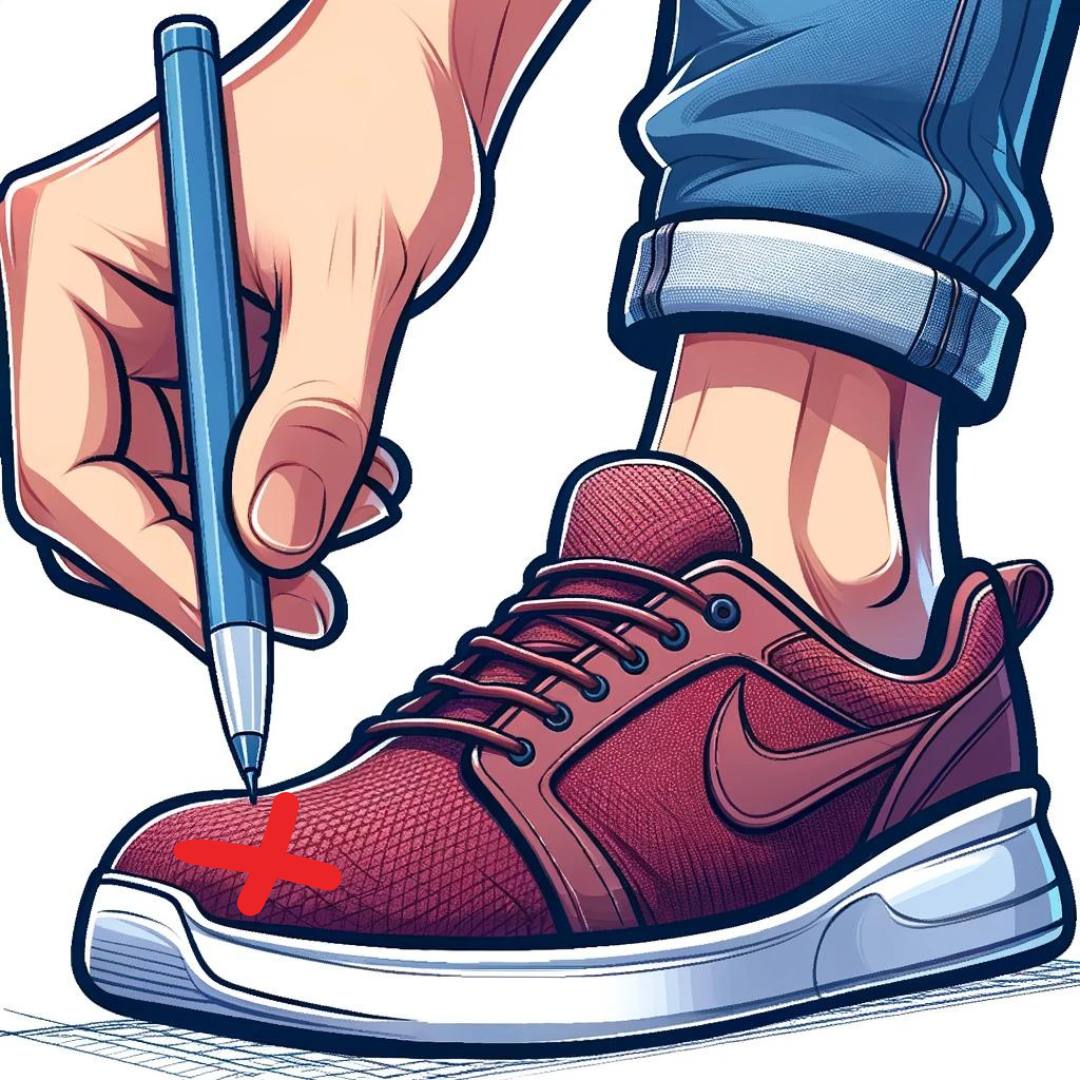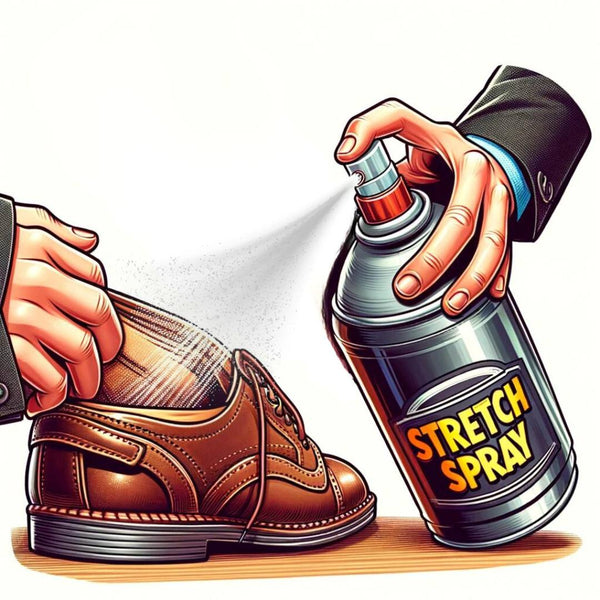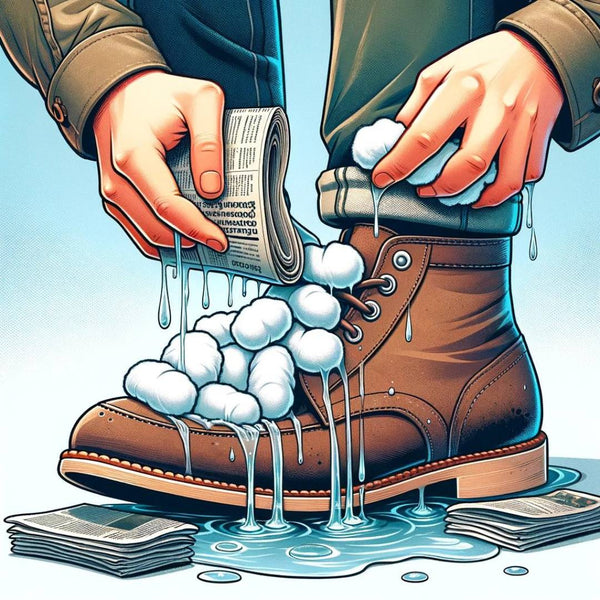
How do you make shoes that are too small in the toes more comfortable?
Do you know that feeling? You just bought a new pair of shoes, but after walking around for a while you notice that they are actually just a little too small in the toe area. It is a common dilemma that many of us face. But don't worry, there are solutions!
In this blog, you will discover how to tackle this problem and still enjoy your favorite shoes. Wearing shoes that are too small , especially in the toe area , can not only be uncomfortable but can also lead to long-term foot problems. That is why it is essential to know how to prevent this and what steps you can take to make your shoes more comfortable.
When are shoes too small?
Identifying shoes that are too small is crucial to your foot health . One telltale sign is when your toes are constantly pressing against the front of your shoes. This can lead to pain, blisters, and even permanent foot deformities if it happens over a long period of time. Other signs include red spots on your feet after wearing the shoes, a pinching pain when walking, or a feeling of being “crowded” in your feet. These symptoms indicate that the shoes are not the right fit for your feet.

Consequences of wearing shoes that are too small
Shoes that are too small can cause a variety of problems, including ingrown toenails, hallux valgus (a deformity of the big toe), calluses, and even sweaty feet due to limited ventilation . Shoes that are tight around the toes are especially at risk of these problems. That’s why it’s important to know how to properly stretch or adjust your shoes to improve their fit, or to choose shoes that are better suited to the shape and size of your feet in the future.
Practical solutions for stretching shoes
Once you've determined that your shoes are too small, there are several methods you can use to make them more comfortable.
- Have your shoes stretched at the shoemaker
One of the most common solutions is to have your shoes stretched by a cobbler. Professional cobblers have the right tools and experience to gently stretch your shoes without damaging them, which is especially useful for high-end or delicate shoes.

- The use of stretch sprays
Another effective method is to use stretching sprays . These sprays are designed to make the material of the shoe, especially leather, more flexible, allowing it to stretch more easily. You spray the inside of the shoe, wear it for a while, and let the material adapt to the shape of your foot.

- Use wet newspapers or cotton pads
Home remedies such as using wet newspapers or cotton pads are also popular. You fill the front of the shoe with wet newspapers or cotton pads, leave it overnight, and the shoes will stretch slightly. This method is simple and cost-effective, but usually only provides limited stretching.

- Ice method for stretching
The ice method is a unique approach where you put water in sealable plastic bags, place them in the shoes, and then put them in the freezer. As the water freezes and expands, it stretches the shoes. This method is especially useful for small stretches.

- Wet and wear with thick socks
Finally, wetting the shoes and wearing them with thick socks is a traditional method. Wetting the shoes and then wearing them with thick socks allows the material to adapt to the shape of your feet. This is a good method for shoes that are just a little too tight.

Each of these methods has its own advantages and disadvantages, and the choice depends on the type of shoe, the material, and how much you need to stretch them. Experiment with these techniques to see which works best for your specific situation.
Home Solutions vs Professional Help
When it comes to stretching shoes, you can choose between home remedies and professional help. Home remedies, such as the aforementioned stretching sprays, wet newspapers, and ice method, are convenient and cost-effective. They are ideal for small adjustments and when you need a little extra space quickly. The best part is that you can use these methods at your own pace and in the comfort of your own home.
When is it time to call a professional?
However, there are situations where professional help is the better choice. If you are dealing with expensive or delicate shoes, such as designer shoes or shoes made of fine materials, it is wise to go to a cobbler. Cobblers have specialized equipment and expertise to carefully and effectively stretch shoes without causing damage. In addition, they can provide advice on how to best treat your specific type of shoes.
Pros and cons of DIY methods
The choice between DIY methods and professional help depends on several factors such as the value of the shoes, the material, and how much they need to be stretched. In some cases, a combination of both approaches can produce the best results. It is important to balance the risk of damage to the shoes against the desired level of comfort.
Prevention is better than cure
Choosing the right shoe size from the start is essential to avoid problems with shoes that are too small. It is important to measure your feet correctly and to consider different brands and models, which can all vary in sizing. Always try to try on shoes at the end of the day, as your feet may be slightly larger due to natural swelling.
Also consider using elastic laces , which can add extra flexibility and adaptability to your shoes, making the fit more comfortable even as your feet swell throughout the day.
The importance of running in
In addition to the right size, breaking in new shoes is a crucial step. Start by wearing the shoes for short periods at home, gradually increasing the wearing time. This gives the shoes a chance to adapt to the shape of your feet and prevents discomfort or blisters from prolonged wear.
It is also important to pay attention to the width of the shoe, not just the length. People with wider feet may need to look for specific models or brands that offer wider options. Taking these precautions can help you avoid many of the issues associated with too-tight shoes and ensure a more comfortable experience.
Alternatives and additions
In addition to shoe stretching, there are other alternatives and additions that can help improve fit and increase comfort. One popular tool is the use of heel protectors . These can be placed in the heel of the shoe to reduce friction and create a better fit, especially if the shoe is a little too big in the heel.
The use of insoles and tongue pads
Insoles and tongue pads are other useful accessories. Insoles provide extra cushioning and can slightly adjust the shoe size for a better fit. They are also useful for improving walking comfort and supporting the arch of the foot. Tongue pads can be used to reduce the space between the top of the foot and the shoe, which is useful if there is too much space and your foot is sliding around in the shoe.
These add-ons are not only useful for adjusting the fit of shoes that are too small, but also for improving the overall wearing experience. They can help reduce foot pain, prevent blisters, and provide better support while walking. By choosing the right combination of these tools, you can significantly increase the comfort of your shoes.
Frequently Asked Questions
In this section we will address some frequently asked questions about shoe stretching, to help you find the best solutions to your shoe problems.

Question: How do I know if a cobbler can stretch my shoes?
Answer: Most shoemakers have the expertise and tools to stretch shoes. It is advisable to inquire beforehand, especially when dealing with special materials such as suede or leather.
Q: Are stretch sprays safe for all types of shoe materials?
Answer: Although many stretch sprays are suitable for different materials, it is always wise to read the instructions first and possibly carry out a small test on an inconspicuous area of the shoe.
Question: How long should I leave wet newspapers or cotton pads in my shoes?
Answer: Ideally, leave them overnight. Check the shoes the next morning and repeat if necessary.
Q: Can I use the ice method on non-leather shoes?
Answer: Yes, the ice method can be used on different materials, but be careful with delicate fabrics and always check first if the material is water resistant.
Question: Are insoles suitable for every shoe?
Answer: Insoles can be used in most shoes. Just make sure they are the right size and shape for your shoes and feet.
Summary of solutions
- Professional shoe stretching for delicate materials.
- Use stretching sprays for a flexible fit.
- Wet newspapers or cotton pads for easy stretching at home.
- Using the ice method for subtle adjustments.
- Wet and wear with thick socks for instant relief.
Choosing the right shoe size and carefully breaking in new shoes are crucial steps to prevent discomfort. By applying these methods, you can significantly improve the comfort of your shoes and avoid foot problems.
